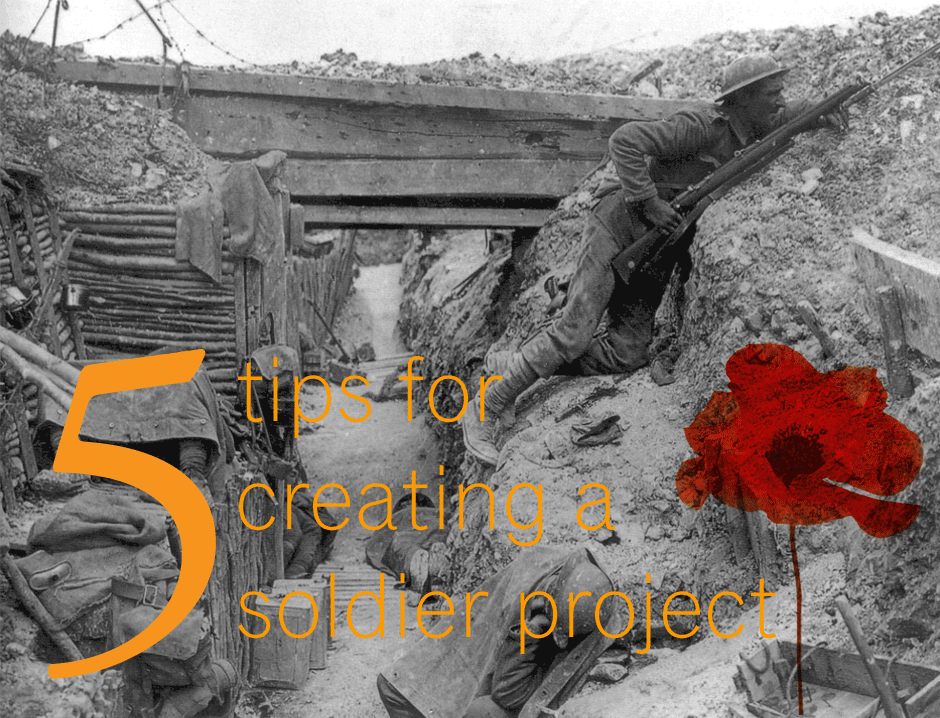

Can adian history teachers from the Ottawa Catholic School Board, Vanessa Kirtz and Erin Stokes took a particularly creative approach to this challenge. Since 2013 and 2007 respectively, they’ve worked on an ambitious project in which students research the lives of Canadian soldiers who died while serving in the First and Second World War.
adian history teachers from the Ottawa Catholic School Board, Vanessa Kirtz and Erin Stokes took a particularly creative approach to this challenge. Since 2013 and 2007 respectively, they’ve worked on an ambitious project in which students research the lives of Canadian soldiers who died while serving in the First and Second World War.
Calling it a “Soldier Project,” the teachers either assign soldiers at random or allow students to choose a family member, and their students conduct research using archives, newspapers, and online databases to contextualize their soldier’s contribution to the war efforts.
Kirtz and Stokes are no strangers to the educational benefits of soldier projects. They’ve taken it a step further by leading international Canadian history tours to the very World War battlefields where their soldiers once fought. Students arrive back from these trips with a better understanding of Canadian history, a greater awareness of cultures beyond their own, and a continued desire to learn beyond the textbook. Kirtz and Stokes have shared just a few tips with us, so that your students can start their own soldier projects, too.

Find soldiers near your school community
Giving students a list of soldiers from near your hometown makes it easier for them to find information, and provides added relevance for each student. As they explore local libraries and museums for information, your students will understand more about how their community was involved during the time of the war. Visit the Commonwealth War Graves Commission website for a full listing of cemeteries with soldiers from your local community.

Use newspapers, legions and attestation papers
You’d be surprised to learn just how much information can be found in your local community newspaper and legion. Attestation papers from Library and Archives Canada and Veterans Affairs Canada also provide material for students to begin their investigation. Have your students visit Ancestry.ca as well, to see if their soldier has any living family members.

Encourage students to investigate
Although it can take anywhere between 4-6 months to complete a soldier project, some students may not be able to get enough information on their soldier. In these times, students simply need to dig deeper into a variety of offline and online resources. Teach students how to call their local community members for more information. This is a great lesson in critical thinking skills, communication and researching.

Invite local war veterans
Make sure to invite veterans to your school for class presentations. Doing this near the end of the projects allows students to be more empathetic and open to asking questions. A great resource for inviting a veteran is through The Memory Project, a year round nationwide bilingual project that connects veterans and Canadian forces personnel with schools and community forums for the opportunity to share personal stories on the impact of war and global conflicts.

Visit corresponding battlefields
Plan a trip abroad with Explorica to visit the battlefields and cities where Canadian soldiers fought, and to memorialize them at the cemeteries where they are buried. These trips can be customized to fit your educational needs, with historical locations that reflect your classroom lessons. Tour Directors are knowledgeable about both the city and historical aspects of the trip, allowing your students to fully immerse themselves into the environment.

